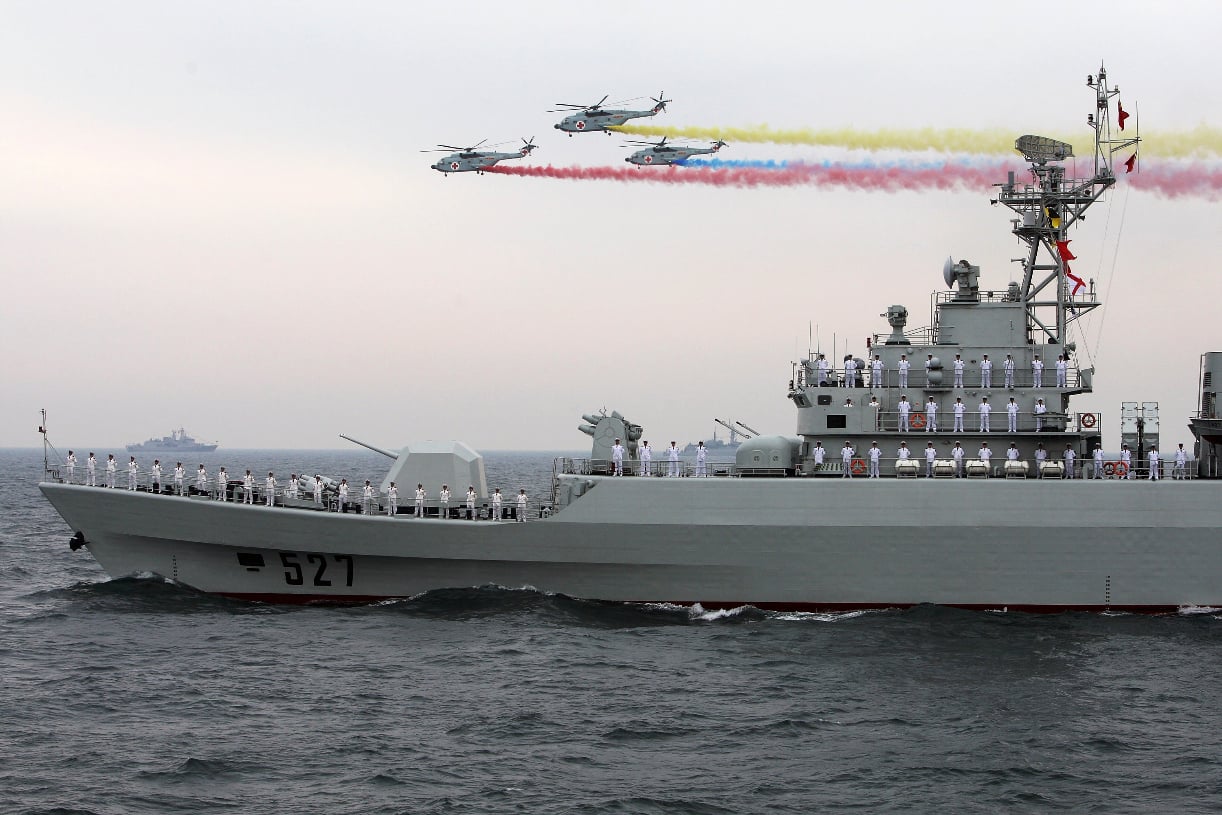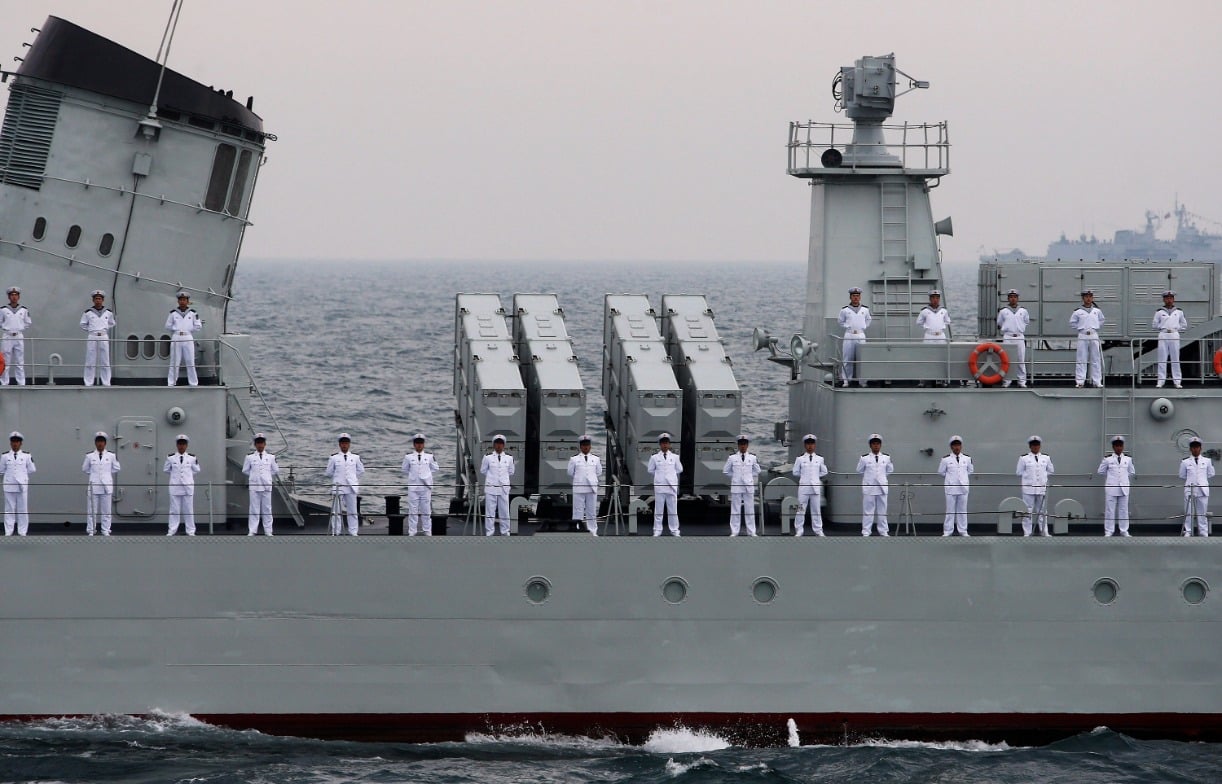The U.S. Navy's New Problem: A Russia-China Navy 'Alliance'?
Russia has ramped up its naval and aerial activities near U.S. territory and in the Indo-Pacific, now working closely with China. Recently, six Russian and four Chinese warships conducted joint patrols in the western Pacific, following naval exercises.
Summary and What You Need to Know: Russia has ramped up its naval and aerial activities near U.S. territory and in the Indo-Pacific, now working closely with China. Recently, six Russian and four Chinese warships conducted joint patrols in the western Pacific, following naval exercises.

-The cooperation highlights strengthening military ties between the two nations. Despite these activities, Russia's military capabilities have been significantly degraded by heavy losses in Ukraine, with hundreds of aircraft and warships destroyed.
-While China boasts the world’s largest naval force, its operational experience is limited compared to the U.S., which continues to demonstrate its naval superiority.
Russia and China Boost Military Cooperation with Joint Pacific Naval Patrol
In recent months, Russia has increased its activity close to the United States and Indo-Pacific.
Russian naval assets and aircraft have been sailing and flying close to U.S. territory, and, increasingly, they are not alone.
The Russian-Chinese Axis
In recent days, six Russian warships have joined four Chinese warships and support vessels in a joint patrol in the western part of the Pacific Ocean.
Specifically, the vessels involved included two Russian destroyers, three corvettes, one submarine and one Chinese cruiser, one destroyer, one frigate, and a fleet oiler to replenish the warships with fuel while underway.
The joint Russian-Chinese action group took to the seas after a large-scale naval and maritime exercise between the Russian Navy and the People’s Liberation Army Navy.
The warships conducted routine anti-surface, anti-submarine, and air defense activities. The joint exercise is just one more activity that is intended to bring the Russian and Chinese militaries closer. This time around, the joint action group didn’t come close to U.S. waters but operated close to important U.S. allies like Japan and South Korea.

Over the summer, the U.S. Air Force and Coast Guard had to deal with repeatedly incursions of Russian and Chinese aircraft and vessels close to American waters and airspace, especially around Alaska.
For example, U.S. and Canadian assets had to respond to several instances of Chinese and Russian aircraft, including strategic bombers that can carry air-launched nuclear weapons, flying within the Alaska Air Defense Identification Zone.
Beijing fields the largest naval force in the world with over 600 ships, recently surpassing the U.S. Navy. However, in terms of quality and operational experience, the Chinese Navy is still miles behind the U.S.
For example, Beijing can’t even field three operational aircraft carriers to the U.S.’s eleven supercarriers. Moreover, U.S. Navy crews have been amassing operational experience over more than two decades of operations in the Middle East. Further, U.S. warships continue to amass operational experience. In Iran’s recent ballistic missile attack against Israel, U.S. guided-missile destroyers shot down incoming munitions.
As far as the Russian Navy, the fighting in Ukraine has shown that it shouldn’t be considered a serious threat.

A Bear Without Claws
The Russian military’s activity is remarkable, given that the country is at war and hard-pressed to win. The Ukrainian military has put up a fierce resistance to Russia’s illegal invasion, inflicting hundreds of thousands of casualties on the invading Russian forces and destroying or damaging thousands of heavy weapon systems. Moscow has suffered heavy losses in both sea and air.
Although the majority of the fighting has been taking place on the ground, the Russian Aerospace Forces and the Russian Navy have taken significant losses. Specifically, according to the Ukrainian Ministry of Defense, the Russian Aerospace Forces have lost approximately 696 fixed-wing and rotary-wing aircraft, while the Russian Navy has had approximately twenty-eight warships, including submarines and guided-missile cruisers, and support vessels damaged or destroyed by Ukrainian action.
Western intelligence estimates are more conservative with Russian aircraft casualties but still assess losses into the hundreds.
Beijing might be cozying up to Moscow, but it probably understands that the Bear’s claws are not as sharp as they used to be.
About the Author
Stavros Atlamazoglou is a seasoned defense journalist specializing in special operations and a Hellenic Army veteran (national service with the 575th Marine Battalion and Army HQ). He holds a BA from the Johns Hopkins University and an MA from the Johns Hopkins’ School of Advanced International Studies (SAIS). His work has been featured in Business Insider, Sandboxx, and SOFREP.
Image Credit: Creative Commons and/or Shutterstock.


